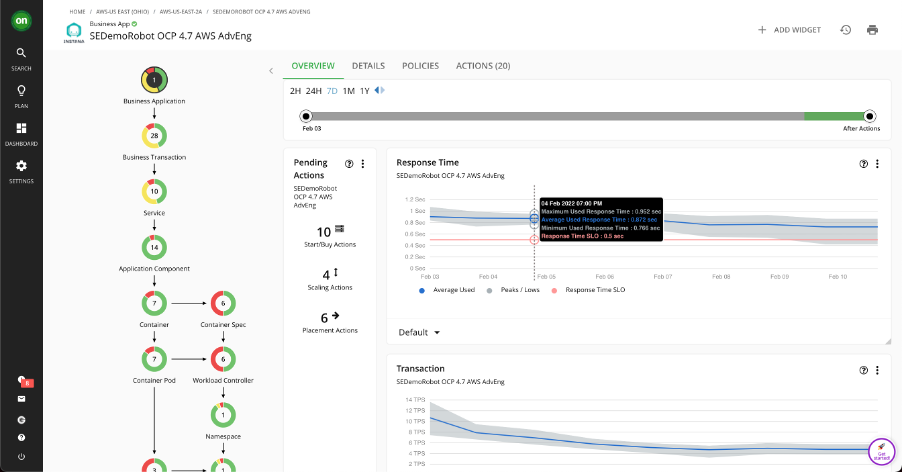In an increasingly digital era, organizations face significant challenges in managing the myriad of applications that underpin their operations. Application Resource Management (ARM) has become essential as a strategy to optimize the utilization of resources associated with these applications. With effective ARM, companies can ensure that resources—whether hardware, software, or human capital—are managed efficiently to support optimal application performance. This article will explore the critical aspects of Application Resource Management, including fundamental concepts, benefits, and key components that facilitate its implementation, enabling organizations to achieve greater operational efficiency and enhanced user satisfaction.
What is Application Resource Management?
Application Resource Management (ARM) refers to the strategic process of managing and optimizing the allocation and utilization of resources associated with software applications within an organization. This encompasses the planning, monitoring, and controlling of various resources—both tangible and intangible—to ensure that applications run efficiently, cost-effectively, and deliver optimal performance.
Importance of Application Resource Management in Modern IT Environments
In today’s fast-paced digital landscape, businesses increasingly rely on a plethora of applications to drive operations, enhance customer experiences, and gain a competitive edge. As the complexity and volume of applications grow, effective resource management becomes critical. ARM helps organizations to minimize operational costs, improve application performance, and ensure seamless user experiences. It also supports businesses in adapting to dynamic market demands and technological advancements, thus facilitating sustainable growth.
Key Concepts

Resource Allocation
Resource allocation involves distributing available resources to various applications based on their needs and priorities. This process ensures that applications have the necessary resources—such as CPU, memory, and storage—to function effectively while avoiding overprovisioning or underutilization.
Performance Monitoring
Performance monitoring refers to the continuous assessment of application performance and resource utilization. This involves tracking metrics such as response times, throughput, and error rates to identify bottlenecks or performance issues. Effective monitoring enables organizations to make data-driven decisions and optimize resource allocation in real time.
Cost Management
Cost management in ARM focuses on controlling and minimizing expenses associated with application resources. This includes analyzing costs related to hardware, software licenses, and personnel while ensuring that investments in resources yield a high return. Effective cost management allows organizations to align their IT spending with business goals and improve overall financial health.
Types of Resources Managed
Hardware Resources
Hardware resources include physical components such as servers, storage devices, and networking equipment that support application deployment and performance. Proper management of these resources ensures that applications have the necessary infrastructure to operate smoothly and efficiently.
Software Resources
Software resources encompass the applications themselves, as well as any associated tools, platforms, and services. Effective management of software resources involves monitoring application performance, ensuring compatibility with hardware, and managing software licenses to optimize usage and compliance.
Human Resources
Human resources refer to the personnel responsible for managing and maintaining applications and their associated resources. This includes IT staff, application developers, and support teams. By ensuring that human resources are adequately trained and equipped, organizations can enhance their ARM efforts and drive better application performance.
Benefits of Effective Application Resource Management
Enhanced Performance and Efficiency
Effective Application Resource Management leads to improved application performance by ensuring that resources are allocated optimally. By monitoring resource usage and identifying bottlenecks, organizations can adjust resource allocations in real time, allowing applications to run smoothly and efficiently. This proactive approach not only enhances the user experience but also maximizes the productivity of IT resources.
Cost Reduction and Budget Management
One of the most significant advantages of ARM is its ability to reduce costs associated with application operations. By optimizing resource utilization, organizations can avoid overprovisioning and minimize wasteful spending on unnecessary hardware and software licenses. Additionally, effective cost management helps businesses stay within budget and allocate resources more strategically, leading to better financial outcomes.
Improved Service Delivery and User Satisfaction
With efficient resource management, organizations can deliver services more reliably and quickly, leading to enhanced user satisfaction. Applications that perform well and respond promptly to user requests result in a positive experience for customers and employees alike. Satisfied users are more likely to engage with applications, ultimately driving business success.
Scalability and Flexibility in Resource Usage
As business needs evolve, the ability to scale resources up or down becomes crucial. Application Resource Management enables organizations to adapt quickly to changing demands, whether it’s ramping up resources during peak usage times or scaling down during quieter periods. This flexibility allows organizations to respond effectively to market dynamics while maintaining cost control.
Key Components of Application Resource Management
Resource Discovery and Inventory
A comprehensive understanding of available resources is the foundation of effective ARM. Resource discovery involves identifying all hardware and software assets within the IT environment, creating an inventory that can be monitored and managed. This visibility helps organizations make informed decisions about resource allocation and utilization.
Monitoring and Analytics
Continuous monitoring of application performance and resource usage is essential for effective ARM. Advanced analytics tools can track key performance indicators (KPIs) and resource consumption patterns, providing insights that drive optimization efforts. By leveraging data analytics, organizations can proactively address performance issues and improve resource allocation strategies.
Automation and Orchestration
Automation plays a vital role in Application Resource Management by streamlining resource allocation and management processes. Orchestration tools can automate routine tasks, such as scaling resources in response to demand or deploying updates, thereby reducing the burden on IT staff. This not only enhances efficiency but also allows teams to focus on more strategic initiatives.
Reporting and Compliance
Regular reporting on resource usage, performance metrics, and cost management is crucial for maintaining compliance and aligning IT operations with business objectives. Detailed reports provide insights into resource effectiveness, enabling organizations to identify areas for improvement and ensure that they meet regulatory requirements.
Application Resource Management is essential for organizations looking to optimize their IT resources, improve application performance, and reduce costs. By understanding the benefits and key components of ARM, businesses can implement effective strategies that enhance their operational efficiency and drive better service delivery.
For organizations aiming to elevate their Application Resource Management practices, consider exploring solutions from IBM Turbonomic and Juke Solutions, your official partners in achieving efficient resource management and optimal application performance. Together, we can help you navigate the complexities of resource management and support your business goals.
Read more: Maximizing Resources and Efficiency with IBM Turbonomic


